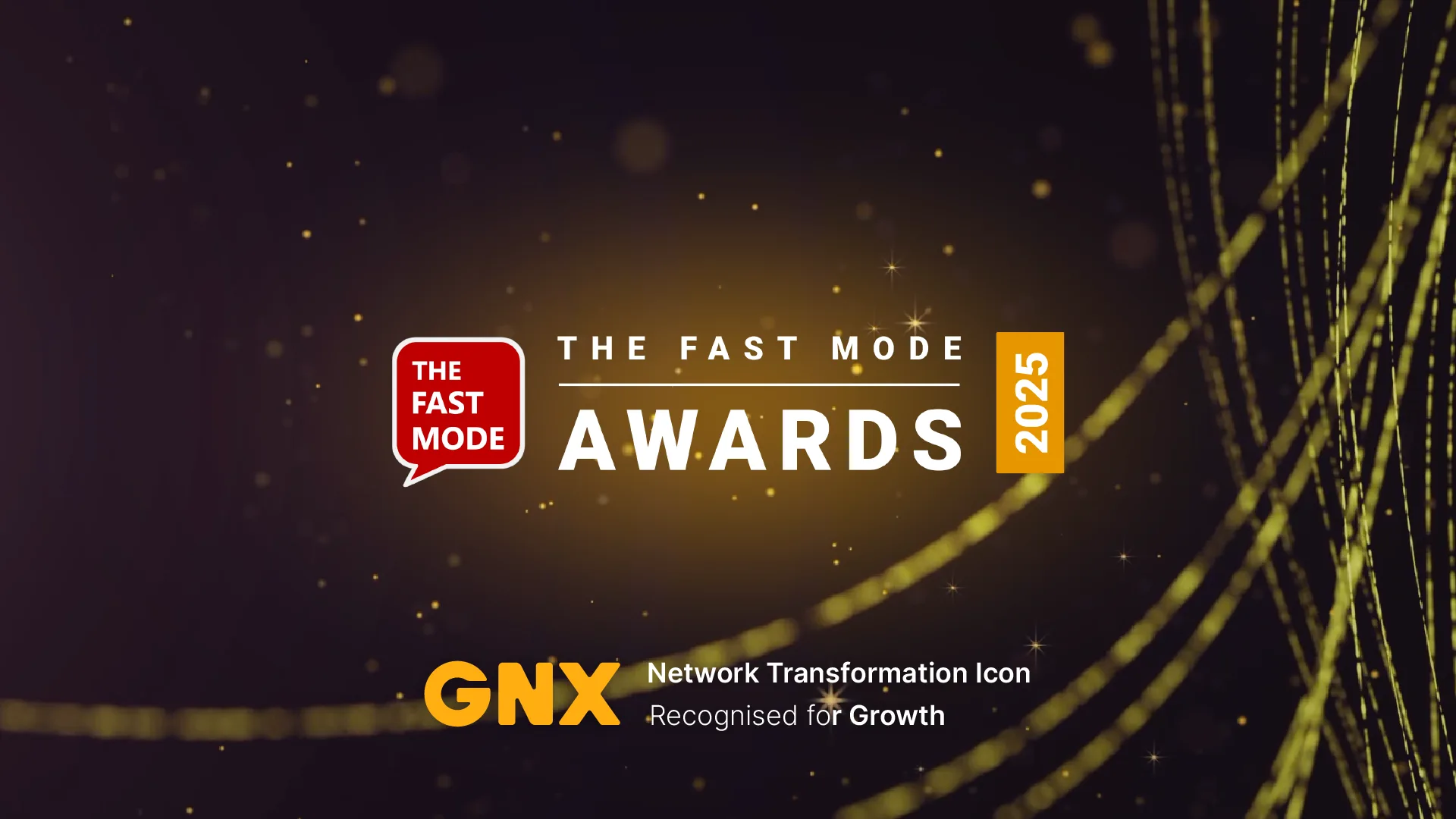Time to move on: migrating your global networks is easier than you think

There’s no doubt these days: connectivity isn’t a commodity, but a strategic business asset. Still, some organizations – including some IT people – think that as long as the network connects all your people without too many problems, it’s OK. The problem is they’re right: it is OK. It is just not ideal.
Business success is more than keeping the lights on and the doors open. At least it should be. Even with what seems like basic infrastructure, there’s always a way to optimize for ease-of-use, upgrade for higher performance, or innovate for new opportunities.
You may already know that seeing your network as a strategic enabler can light the way to a new approach – and if so, great; that’s what drives our thinking at GNX. But what many worry about is getting from Situation A to Situation B. As much as there’s a fear of missing out, there’s a fear of moving on. Would it be too much of a hassle to leave your ISP relationships, or the provider you’ve always known, for a different, maybe better, way of getting things done?
It isn’t. And that’s the subject of this article: to explain how migrating your connectivity estate to a more strategic setup isn’t as hard as you think. And the benefits are plenty—let’s get started!
Time for change. If you were waiting for a sign, this is it.
Enterprise networks are continuously evolving. But that’s something you already knew – still, clinging to what’s familiar because “it works” is tempting, even if it’s limiting your innovation, growth, and profit.
What we mean:
- The structure of connectivity has changed. In days gone by, a typical WAN connected basement servers to office desktops. Today, apps sit in the cloud, whether that’s a hyperscale provider or local data center – which means traditional technologies like a leased line can skew capacity in favor of whoever’s on the backbone. Your remote locations or distribution centers may be suffering lower bandwidth, greater latency, and tangled routings to your resources. All of which a new approach can solve.
- Applications are changing, too. The cloud started with desktop productivity apps, then progressed to enterprise applications for supply chain and resource planning, and now, whole new categories are in play: AI compute, hybrid working patterns, and large-scale messaging on the IoT. It means huge changes in the profile of how data is exchanged and transformed. And opportunities for smarter working everywhere.
- Workflows adapt and evolve at breakneck speed. In-house software development happens faster than before – not just due to competitive pressure, but to new techniques like DevOps, Agile, and AI-assisted vibe coding. It’s now common to see new business functionality conceived, coded, and rolled out in a single sprint. This is great for business outcomes – faster deployment of new services, enhanced customer experiences, and streamlined operational efficiency. But it needs always-on, always-up connectivity between parties, which newer technology or a hybrid approach provides more effectively.
- A new world of connectivity providers. Back when WAN basically meant your MPLS, you knew where to go. Mind you, you are probably still there. But with the sophistication of internet-based networks – plus the flexibility they provide – there are great opportunities beyond the well-known vendor. Local, smaller ISPs may be the answer to your diversity requirements. Or LEO might be exactly what your remote offices were needing.
---
Mini-case study: AI-powered analytics enabled by a cloud-integrated network
A tech startup was ready to deploy its sophisticated analytics software to customers – but its connectivity needed to be seamless and integrated network-wide, so every customer had the service quality it deserved.
The solution involved a number of partners around the world – risking a huge pile of paperwork and a department to deal with it. But engaging with those partners via the GNX+ platform let the company sign up with all of them under a single contract, smoothing out service conflicts, SLA worries, and administrative hassle.
---
As you explore new networking technologies and connectivity options – some of which didn’t exist just five years ago – you’ll see more and more areas where your business could benefit from an upgrade. Next, let’s see how you can win with the migration process, too.
The key to a smooth migration – think beyond the pipes
If your current setup grew piece by piece, it’s likely you’ve got cost sinks and resource hogs across the network. What if one office has been downsized, but its connectivity contracts still assume a thousand people work there? Or another agreement locks you in for three years when you plan to close the building in one?

Here are some ways to optimize it all … and best of all, without affecting your people's experience.
- Beware the one-size-fits-all. Sometimes a standard contract offer simply gets copied across all your locations, meaning your smallest office is paying as much for its connection as your largest. So make sure your migration plan drills down into the details and sizes each location’s needs properly.
- Check if contracts are set in stone. Providers are businesses; often, agreements can be renegotiated and improved to score customer satisfaction points. The smaller the provider, the more flexible they often are.
- Even combining contracts alone can be a valuable network upgrade. Bringing that stack of different providers together under a single SLA (to the extent possible) massively simplifies paperwork and provides complete visibility over the whole network from one place. Aggregators, like GNX, are highly experienced in taking ownership of multiple contracts and bringing them under one roof.
- Provision based on best-for-customer, not best-available. The ideal solution isn’t about bandwidth alone; it’s about finding the best fit between you and the complex cloud ecosystem, deciding which SaaS applications would benefit from re-architecting, and whether your hybrid cloud environment is optimal.
Note: Some of our customers end up with the same infrastructure in their solution both before and after they engage with GNX. This isn’t a bug – it’s a feature. Because if that provider still makes sense in the new solution, why not use it?
The difference is that with GNX, those providers are no longer a stack of separate contracts, each with its own sheaf of conditions and renewal dates. They’ve become a unified connectivity solution under the GNX+ platform (often bringing significant savings over the duration of the contracts). And that’s a key part of a smooth migration. Think partners, not pipes.
Ensuring end-to-end: identify, optimize, migrate, and operate
Of the different approaches to building a modern network – do-it-yourself, buy-from-a-portal, and aggregate-under-one-roof – the last makes most sense for today’s enterprise: the simplicity of an integrated contract, the management pluses of whole-network visibility, and the security of guaranteed service levels without finger-pointing between providers. But even that doesn’t cover everything.
Here are a few more things to make your network migration the best it can be.
- The right solution might not be a big name. Around the world, there are thousands of skilled specialists owning infrastructure, underlay, and usage rights. What if one or more of them were perfect for your needs? GNX knows many of these smaller ISPs – and works with them every day.
- Don’t just identify – implement. Marketplaces provide great portals; many have the same list of great partners. But relatively few take responsibility for implementing it and for the day-to-day. management. Answering that need is why GNX got started.
- There are cost savings in unusual places. Having 3,000 providers on the GNX+ platform gives us deep insight into the market and clear benchmarks. Because cost is a competitive advantage too.
- Diversity isn’t a box on a checklist. It’s common to think a diversity requirement is satisfied when, in reality, those two ISPs use the same glass in the ground. Real diversity is a problem GNX solves all the time.
- Continuity must happen without a blip. When agreements are updated and SLAs transferred, the show for your workers must go on. Making use of best practices in both network engineering and legal processes means moving to GNX doesn’t come with service interruptions.
Your global network migration doesn’t need to be a headache
It’s true that migrations and migraines often go together. But migrating your networks doesn’t have to be a complex undertaking.
By relying on GNX, you can count on us getting you from A to B while unlocking significant benefits for your organization. Whether it's finding a better deal for your sites or novating contracts with your existing ISPs, we've got you. Because ultimately, a future-proof network isn't just bandwidth and uptime, but innovation and growth – making the choice of a strategically-minded connectivity partner essential for sustained success.

Every day, we help hundreds of enterprises move away from "just OK" to make their connectivity a strategic advantage.


